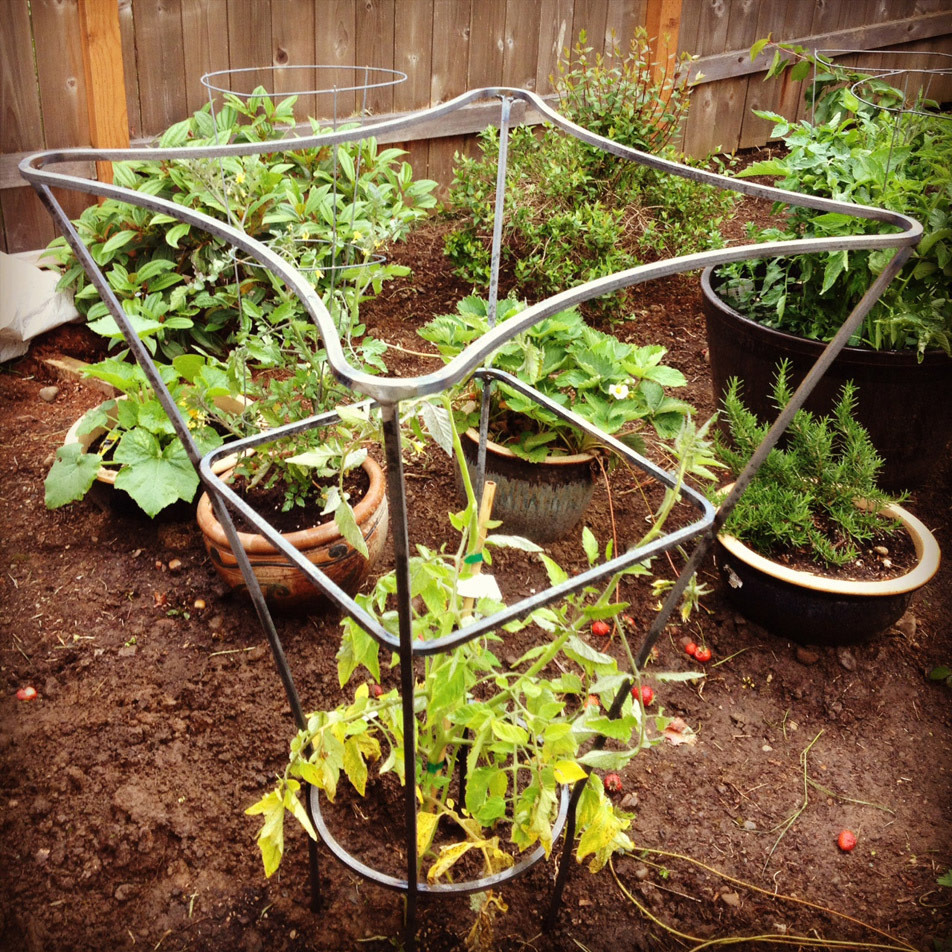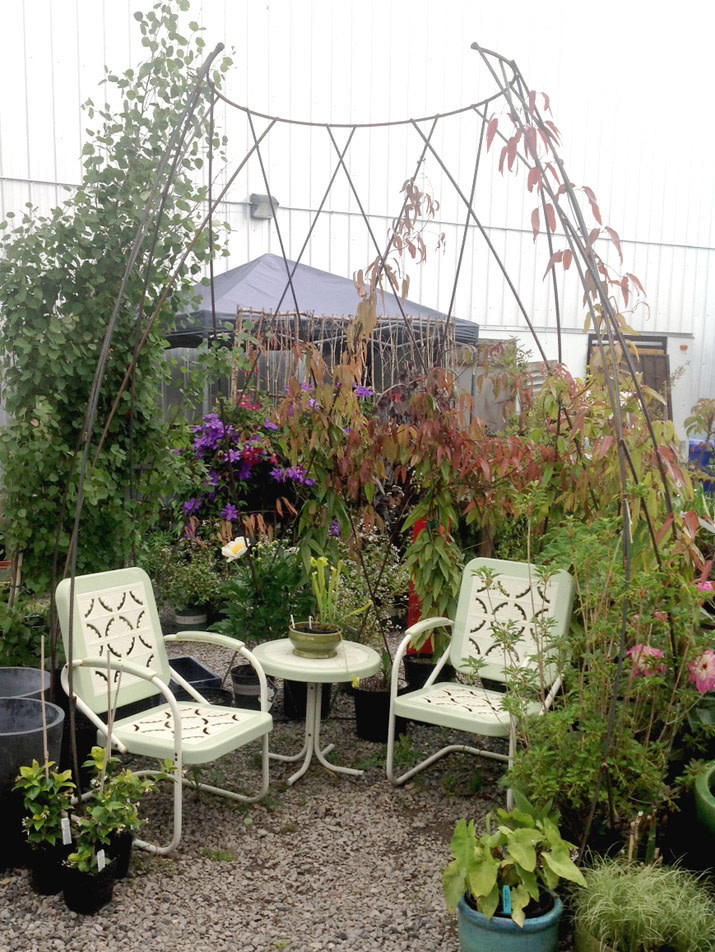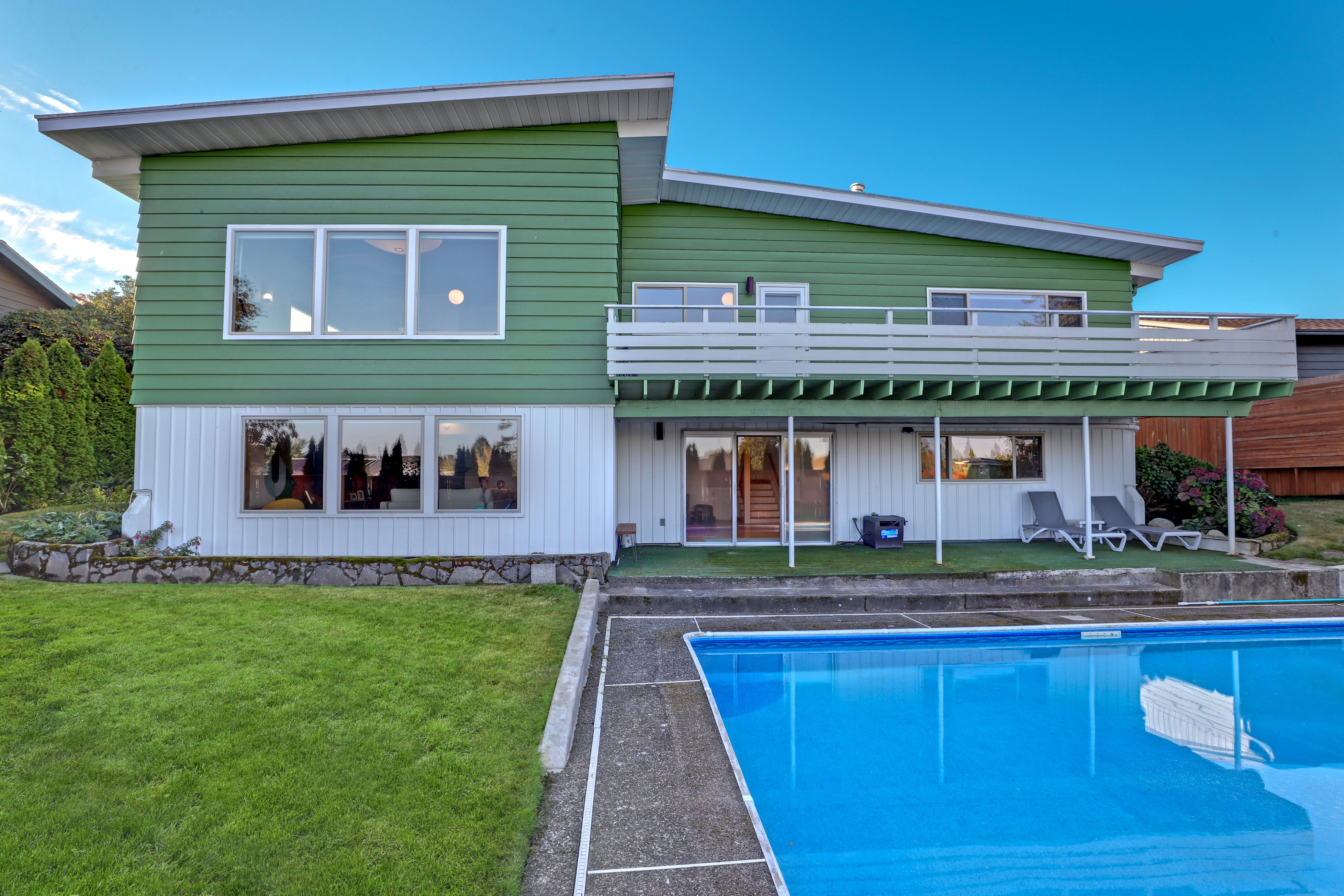Garden Structures Looking Up
Every garden needs some structure. Now, hard at work in a Central Eastside warehouse, two men are trying to help us with that. James Harrison and Evan Holt of Arborela are making simple, sturdy yet beautiful steel structures for the home garden – from arbors to tomato cages, lattice “wedges” to room-sized “Faberge Eggs.”
The collaboration between Harrison and Holt to hatch Arborela (no pun intended, despite their flagship structure being the Egg) began a couple of years ago. Harrison, trained as a sculptor and architect, was looking to expand beyond the many large, civic art projects he’d been working on. Holt was an experienced woodworker and furniture maker eager to take his skills to a new medium – and to the outdoors, to the front and backyards of people’s homes. With their mutual interest in expanding the space in which they worked, you could say they met in the garden.

The tomato cage, like most of the Arborela structures, is made of 3/8 inch square solid steel, helping give it clean, elegant lines. However, the steel is also sturdy and thick enough to withstand rough treatment and heavy use.
Image: Kristin Belz
Like many other Portland designers today, Harrison and Holt love to combine beauty and function. The welded steel pieces are literally strong, made-to-last frameworks on which garden greenery, vines and flowers can flourish for years. Perennials (like Wisteria) can wind their way around the welded steel bars for eternity; annual plants will die back to reveal the clean architectural lines of the structure each winter. With or without foliage growing on them, the pieces are garden art – architectural elements that add focus and hierarchy to a garden space.

The Cove, installed at the garden shop Thicket. As with any garden itself, it's interesting to contemplate how the garden structure will "grow" over time. Annuals would die back to reveal the framework itself in winter; perennials could grow for years.
Image: Kristin Belz
They are also like nothing you’ll see at Home Depot or Lowe’s, nor will you mistake them from something found in an Italian Villa in the sixteenth century. And yet they have a timelessness and primal quality that could make them at home in any garden of any period or style. The line thus far consists of four large scale pieces: the Cove (a.k.a. the Faberge Egg), the Fort, the Wedge, and the Cuff.
Each design pays attention to the human scale. For instance, the large Egg is like a room (or a womb?), yet open and sheltering at the same time. It is ample space for a table and four people to sit comfortably in chairs for a leisurely dinner party. Stepping inside the large, tall, steel lattice egg structure “makes the body look up,” makes “the jaw pull open naturally,” and, as Harrison says, “a sense of wonder is activated.”
And yet, the Arborela structures are utilitarian and practical. They are a framework for a climbing vine, a way to let you “grow your garden in the air.” They can screen a spot for privacy from the street or neighbors, or maximize space in a small terrace or balcony garden.
The structures come in untreated steel that will weather to a natural, brownish roughness, like a subtle version of the patina copper takes on over time. But the tomato cages will also come in colors. Which colors has yet to be determined, but Harrison says he’s thinking of “intense flat pastels – flower colors, contemporary and electric, that'll pull a hummingbird out of the sky...” That I'd like to see.
The tomato cages (and some other structures) are on display and for sale at Portland Nursery, Thicket (off NE Alberta), Cornell Farm and Bamboo Craftsman. To see more now, take the Slide Show tour by clicking on the button at the top image above.
Arborela
Email: info at arborela.com
Phone: 503-997-2834





